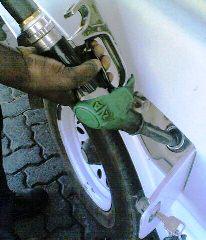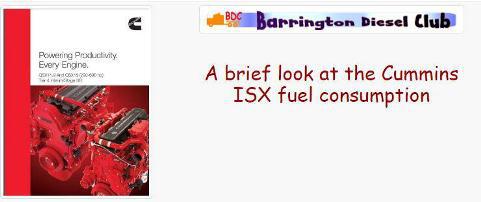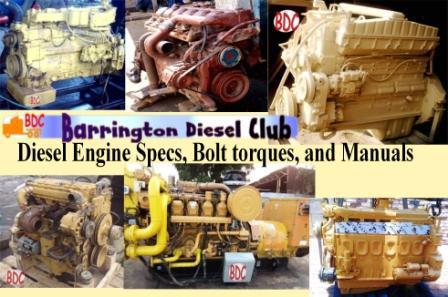Diesel engines consume fuel according to their power requirements.
A correctly tuned diesel engine consumes fuel according to its power requirements. Simple really, the more power you produce the more fuel you use.
The fuel consumption rate for many makes of Diesel Engines can be found in a range between 0.380 & 0.450 lbs/hp hour; 172 & 181 grams/hp hour; 231 & 243 grams/kW hour. This does not represent a big difference in fuel consumption per power unit between most normal naturally aspirated diesel engines, while turbocharged engines are not significantly better.
Fuel consumption for diesel engines is normally more difficult to express than for petrol engines
because of the vast variability in possible applications. Applications like stationary industrial,
marine, automotive, and earthmoving are examples of this variability. So it is normal to express
this fuel consumption as a rate in terms of the weight of fuel consumed per unit of power produced. A real headache
for plant managers!
Now even if an engine operates for long periods at a constant speed it seldom operates at its full rated power.
On a dynamometer, engines seem to operate best at about 70% of expected maximum power, they seem quite tireless when operating there.
Still, asset control may be critical for profitable operation so we trust the following formulae & tables may be of some use.
Turbocharged engines are more efficient.
The aim of turbochargers and aftercoolers are to increase engine efficiency and they do just that. Some of the new turbocharger technologies have resulted in almost unbelievable increases in power output per cylinder of the engine, but this alas, is not a saving in fuel consumption per unit of power produced.
Even so, after some study we have decided to compile two fuel consumption charts, the first one we'll say is for naturally aspirated engines and the second we'll say is for turbocharged engines. However this is an arbitrary classification, and so it's best to get the actual fuel consumption rate for your engine from the manufacturer's spec sheet and then to decide which fuel consumption table should apply to your engine. We'll provide more information on this later, with some example spec sheets to show their theoretical consumption.
You will find some turbocharged engines need to use the table labeled "For naturally aspirated engines" because that's exactly where their fuel consumption falls.
More on Diesel Engine Fuel Consumption
Fuel Consumption Units and calculations:

Cummins ISX Fuel Consumption Report
 Diesel Engine Specs
Diesel Engine SpecsBasic specs are free and open to everyone They usually include engine images, displacement, dimensions and weight, essential bolt tightening torques, plus characteristics of the engine e.g. its power and torque. Essential bolt torques are: main bearing cap bolts connecting rod cap bolts cylinder head bolts
 Diesel Engine Manuals
Diesel Engine ManualsYou need membership for engine manuals or parts books. Subscribe for Membership if you need manuals continually or Take a one week membership if you only need manuals for a specific engine.





